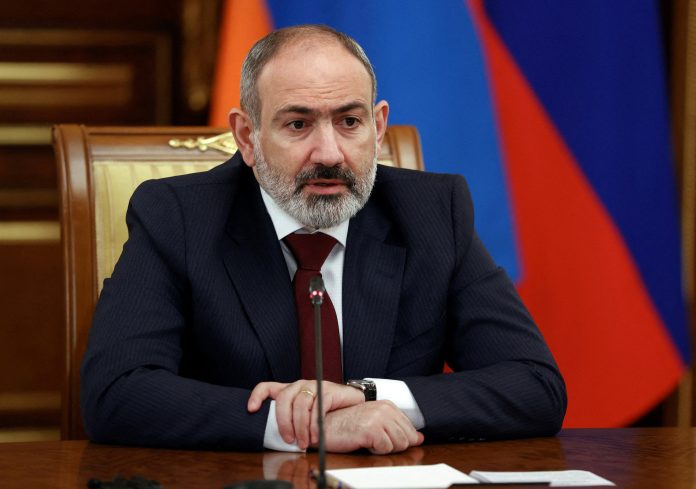Armenian Prime Minister Nikol Pashinyan praised the controversial border delimitation deal with Azerbaijan, calling it a great success in opening remarks at a cabinet meeting on 16 May, while dozens of protesters against the agreement reconvened outside the government building, Armenian Media reported.
The protesters, led by charismatic clergyman Archbishop Bagrat Galstanyan, oppose what they call “unilateral territorial concessions” to Azerbaijan and are demanding Pashinyan’s resignation over his security policy.
Pashinyan and his government have rejected the opposition’s criticism and demand for his resignation.
The border delimitation commissions of Armenia and Azerbaijan on Wednesday agreed on the designated border sections in the villages of Baghanis in Armenia, Baghanis Ayrum in Azerbaijan, Voskepar in Armenia, Ashaghi Askipara in Azerbaijan, Kirants in Armenia, Kheyrimli in Azerbaijan, and Berkaber in Armenia, Ghizilhajili in Azerbaijan. Prime Minister Nikol Pashinyan said this at a meeting of Armenia’s Cabinet of Ministers on Thursday. He also added:
They signed the description-protocols of these border sections. I want to say that I consider what happened to be a great success for two reasons. First, a very important cornerstone has been laid for the further development and strengthening of our sovereignty and independence. Second, for the first time since independence [in 1991], our republic has an officially delimited border, which will considerably increase the level of security and stability not only in the mentioned villages, but also along the entire Armenia-Azerbaijan border.
Pashinyan added:
I want to thank the [Armenian] commission on border delimitation and border security, headed by Deputy Prime Minister Mher Grigoryan, I want to thank all the members of the [Armenian] Security Council.
Also, the Armenian PM reflected on couple of details, noting:
It is recorded that the border delimitation took place with the maps of 1976, which went through the duty process in 1979. For us, it was fundamental that in the process of border delimitation, it was not a process of creating a new border between Armenia and Azerbaijan, but a process of reproducing the borders reaffirmed by the Alma-Ata Declaration [of 1991]. That is, we are saying that we should not create a border, but we should reproduce the borders that existed at the time of the collapse of the USSR and have de jure legal significance.
Protesters demanding the resignation of Armenian Prime Minister Nikol Pashinyan have started blocking the streets of Yerevan. On 4 May, the “Tavush for Motherland” movement began a multi-day march towards the Armenian capital. On 9 May, the march reached Yerevan. Archbishop Bagrat Galstanyan addressed thousands gathered in front of the government building demanding the resignation of the Prime Minister.
The opposition also organised a large rally last week in front of the government headquarters. In response to Archbishop Bagrat’s call, protesters blocked several streets in Yerevan, including Liberty Avenue, Victory Bridge and Tbilisi Highway. Civil disobedience actions also took place in Armenia’s regions, with students from Yerevan State University joining the protests.
